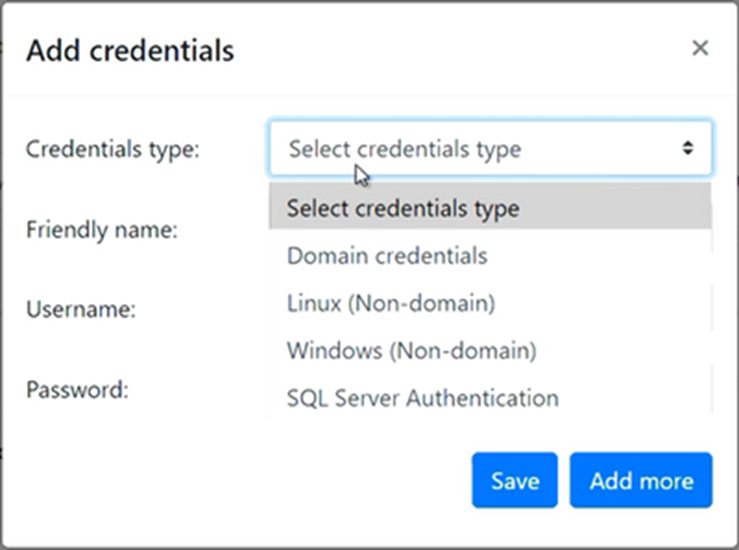Migration planning using Azure Migrate’s software inventory and agentless dependency analysis

Authored by Vikram Bansal, PM, Azure Migrate
Migrating a large & complex IT environment from on-premises to the cloud can be quite daunting. Customers are often challenged with the problem of unknown where they may not have complete visibility of applications running on their servers or the dependencies between them, as they start planning their migration to cloud. This results not only in leaving behind dependent servers causing the application to break, but also adds up to the migration cost that the customers want to reduce. Azure Migrate aims at helping customers build a high-confidence migration plan with features like software inventory and agentless dependency analysis.
Software inventory provides the list of applications, roles and features running on Windows and Linux servers, discovered using Azure Migrate. Software inventory can also help discover specific workloads such as SQL Server instances and databases and IIS web applications (preview) running on the servers. Agentless dependency analysis helps you analyze the dependencies between the discovered servers which can be easily visualized with a map view in Azure Migrate project and can be used to group related servers for migration to Azure.
Today, we are announcing the General Availability of at-scale, software inventory and agentless dependency analysis for VMware virtual machines.
How to get started?
- To get started, create a new Azure Migrate project or use an existing one.
- Deploy and configure the Azure Migrate appliance for VMware.
- Enable software inventory by providing server credentials on the appliance and start discovery. The appliance lets you enter multiple credentials and will automatically map each server to the appropriate credential.
The credentials provided on the appliance are encrypted and stored on the appliance server locally and are never sent to Microsoft.
- As servers start getting discovered, you can view them in the Azure Portal.

- Using the credentials provided, the appliance gathers information on the installed applications, enabled roles and features on the on-premises Windows and Linux servers running in your VMware environment.
- Software inventory is completely agentless and does not require installing any agents on the servers.
- The software inventory is gathered by connecting to the servers through vCenter Server using the VM guest interface. The vCenter Server account needs privileges enabled for Virtual Machines > Guest Operations, to interact with the servers.
- Azure Migrate uses the vSphere APIs to execute a list of queries and pull the required data once every 12 hours.
- A single Azure Migrate appliance can discover up to 10,000 VMware VMs and perform software inventory across all of them.
Agentless dependency analysis
- Agentless dependency analysis feature helps in visualizing the dependencies between your servers and can be used to determine servers that should be migrated together.
- The dependency analysis is completely agentless and does not require installing any agents on the servers.
- You can enable dependency analysis on those servers where the prerequisite validation checks succeed during software inventory.
- The dependency data is gathered by connecting to the server through vCenter Server using the VM guest interface. The vCenter Server account needs privileges enabled for Virtual Machines > Guest Operations, to interact with the servers.
- Azure Migrate uses the vSphere APIs to execute a list of ‘ls’ and ‘netstat’ queries and pull the required data every 5 mins. The appliance aggregates the 5 min data points and sends it to Azure every 6 hours.
- Using the built-in dependency map view, you can easily visualize dependencies between servers. You can also download the dependency data including process, application, and port information in a CSV format for offline analysis.
- Dependency analysis can be performed concurrently on up to 1000 servers discovered from one appliance in a project. To analyze dependencies on more than 1000 servers from the same appliance, you can sequence the analysis in multiple batches of 1000.
Workflow and architecture
The architecture diagram below shows how software inventory and agentless dependency analysis works. The appliance:
- uses the vCenter Server credentials to connect to the vCenter Server and discover the Windows and Linux servers it manages.
- collects software inventory (installed applications) information from servers that were discovered from vCenter Server.
- performs a validation of all prerequisites required to enable dependency analysis on a server. The validation is done when appliance performs software inventory. Users can enable dependency analysis only on those servers where the validation succeeds, so that they are less prone to hit errors after enabling the dependency analysis.
- collects the dependency data from servers where dependency analysis was enabled from the portal.
- periodically sends collected information to the Azure Migrate project via HTTPS port 443 over a secure encrypted connection.
Resources to get started
Published on:
Learn moreRelated posts
Azure Cosmos DB Shines at Microsoft Ignite 2024!
Microsoft Ignite 2024 took over the Windy City this week, bringing with it new technological innovation and exciting product announcements apl...
Security in Azure Local
Azure Local with low cost hardware
Azure AI Agent Service
Getting the most out of Azure DevOps and GitHub
Microsoft has two very successful DevSecOps products in the market – GitHub and Azure DevOps. Azure DevOps has a large enterprise customer bas...



